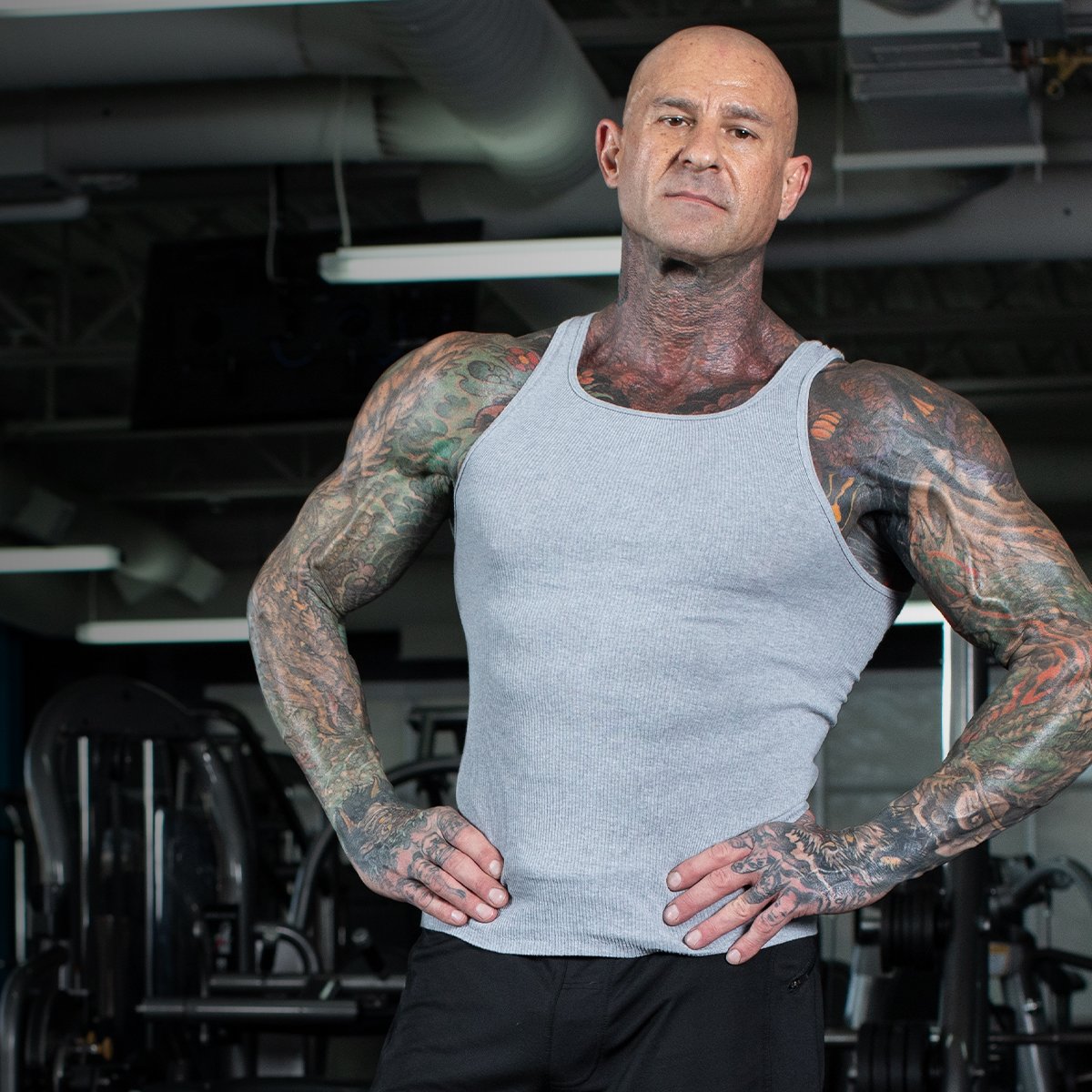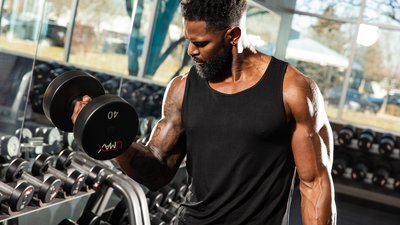Of all the Weider Principles made famous by the late, great Joe Weider, rest-pause is one of my favorites. A training technique with true staying power, rest-pause is a method that involves stopping before the completion of a set, resting for a short period, and then continuing on with the set. It allows for more total reps to be done with a given weight, because it takes advantage of a muscle's ability to recovery rapidly.
In simple terms, rest-pause allows the working muscle time to replenish phosphocreatine (PCr), which is the same molecule that creatine supplements boost. (If you're currently not taking creatine, starting it with this program will help you lift more weight and obtain better results.)
With this shot of extra energy, the muscle can contract stronger, producing greater force and getting more reps. When your muscles produce more force, and you perform more reps, your muscles receive a greater stimulus, which will increase their size and strength. It's that simple.
But like anything, rest-pause training works better when it's part of a plan! Follow the full program, Alternating Rest-Pause Training by Jim Stoppani, in BodyFit Elite. You can track your workouts in the BodyFit app, swap out lifts to match your equipment, and watch demonstration videos of every movement in every workout!
Rest-Pause In Practice
There are two common ways that rest-pause training is used. Bodybuilders typically use it by taking a set to failure, resting 10-15 seconds, and continuing the set until reaching failure again. They may do this 2-3 times per set—doing 2-3 rest-pauses, you might say—which allows a lifter to complete more reps with a given weight and to take that muscle far beyond failure. This instigates chemical changes within muscle cells that result in muscle growth.
Rest-pause training can also be used to increase muscle strength. The concept here is not necessarily to get more total reps or reach a higher state of fatigue, but to optimize the force produced on each rep. To prioritize strength gains with rest-pause, you typically use a weight that only allows you to get 3-5 reps (your 3-5 rep max, or RM). Let's say you pick a weight that's your 3RM. You'd do one rep, rack the weight, rest 15 seconds, and pump out another rep. You'd repeat this process until you've finished 4-6 reps, which would conclude one rest-pause set. This technique has been shown to be effective at producing solid strength gains.
New Rest-Pause on the Block
Now, here's a new variation of rest-pauses: alternating rest-pause training. This is a brand-new way to use rest-pauses with unilateral arm and leg exercises. The concept is simple. As you work one side of the body, the opposite side is resting, and you cycle back and forth from one side to the other.
To do this, choose a weight that allows you to complete about 6-8 reps. I'll use one-arm dumbbell curls as an example. Do three reps of curls on the right arm, then immediately switch to the left arm and do three reps. Switch back to the right arm for three more reps and continue in this fashion, doing three rest-pauses for three reps, then two rest-pauses for two reps and finally one rest pause for one rep. By the end of the set, you will have completed 14 reps with a weight you could normally only do for 6-8 reps. This not only pushes muscle growth, but also muscle strength.
And because you're using one arm (or leg) at a time, you're stronger than you are when you use two arms. That is, when you perform single-arm exercises like a one-arm dumbbell curl, you can curl more weight than half of what you could curl on a barbell using both arms, which leads to even greater gains in muscle strength.

Here's one more twist: On the last set of each exercise, do as many reps as you can on the final rest-pause, the one that's supposed to be just one rep. This will not only increase the intensity on that last set, but it will serve as a barometer for how appropriate the weight you selected was. If you can do more than one rep on the final rest-pause of the final set of an exercise, increase the weight by 5-10 pounds for the next workout. If you can only complete one rep, the weight you selected is perfect. If you can't complete the final rep on the final set, reduce the weight by 5-10 pounds next time. If you can't complete the final rep on any of the first two sets, reduce the weight by 5-10 pounds before your last set, instead of sticking with a load that's too heavy.
Although you can stick with your current training split and simply insert alternating rest-pause workouts for each muscle group, I recommend trying the four-day training split I suggest below under "Alternating Split." This has you training chest, triceps, and abs on Mondays; legs on Tuesdays; shoulders, traps and abs on Thursdays, and back and biceps on Fridays. Wednesday, Saturday, and Sunday are rest days. Follow my Alternating Rest-Pause program for four weeks, then switch to a new training program.


